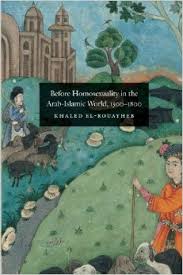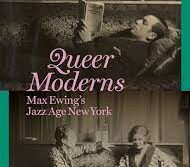 Before Homosexuality in the Arab-Islamic World, 1500-1800
Before Homosexuality in the Arab-Islamic World, 1500-1800
by Khaled El-Rouayheb
University of Chicago Press. 210 pages, $32.50
SOME MONTHS AGO, a disturbing picture appeared in a number of gay and lesbian publications. It showed two young and hooded men about to be hanged in Iran for the crime of sodomy. It has been reported that, since the Islamist revolution in 1979, several thousand gay men have been executed. In many ways, this grim picture speaks eloquently to the major themes of Khaled El-Rouayheb’s important new book, Before Homosexuality in the Arab-Islamic World, 1500-1800. While bringing to life the vibrant homoerotic tradition in Islamic culture, El-Rouayheb concludes that male same-sex desire was not the same as our current understanding of homosexuality, but rather something else, and that “sodomitical” acts were intensely problematical during this 300-year period, just as they are today.
El-Rouayheb is a postdoctoral research fellow at the University of Cambridge, and this book is a revised version of his doctoral dissertation. As such, it is a remarkably learned volume that provides an excellent introduction to a long-neglected area of study in the English-speaking world. Thankfully it does not suffer from the obscurantism and use of jargon that are so common in Ph.D. theses. Actually, very few accessible studies of this sort exist, the best-known exception being Stephen O. Murray and Will Roscoe’s Islamic Homosexualities (1997). But El-Rouayheb does not like that book, which paints what he regards as an inaccurate, romanticized, and ultimately Westernized picture of Arab-Islamic same-sex behavior, claiming it to be “homosexual” when in fact it was not.
This critique is nothing new and its underpinnings not hard to find. El-Rouayheb has embraced the paradigmatic orthodoxy of queer theory according to which homosexuality is a cultural construction of 19th-century Europe. This doctrine allows him to deny what many of us have seen as an apparent contradiction at the heart of the Arab-Islamic view of homoerotic relations: while literary works of various kinds depict same-sex attraction in exalted words and images, Islamic law and theological tradition condemn homosexuality in the severest of terms. How to explain this inconsistency? El-Rouayheb argues that there really is no contradiction once one dispenses with the notion that homosexuality is a cross-cultural, trans-historical concept.
He does an excellent job of sketching the sexual categories that did exist, drawing from a dazzling variety of sources—everything from medical and legal treatises to poetry and belles-lettres to juicy biographical and polemical works. In and of themselves, these texts are worth reading for their sharp insights and humorous, often insulting words. In three separate chapters, entitled “Pederasts and Pathics,” “Æsthetes,” and “Sodomites,” El-Rouayheb exhaustively maps the categories and distinctions that mattered to Arab-Islamic culture during these centuries: first, a distinction “between the ‘active’ and the ‘passive’ partner in a homosexual encounter”; second, a demarcation “between passionate infatuation (…) and sexual lust”; and, finally, a focus “on exactly what sexual acts were involved—Islamic law prescribed severe corporal or capital punishment for anal intercourse between men, but regarded, say, kissing, fondling, or non-anal intercourse as less serious transgressions.” None of these distinctions has anything to do with our great divide between homo- and heterosexual orientations.
Along the way, El-Rouayheb dismisses some common myths, such as the persistent notion that a cause for the formation of passionate attachments between older and younger males was the non-availability of Muslim females. A particularly engaging section deals with the practice of gazing on beautiful young men as a source of spiritual illumination.
In the end, however, one suspects that the author protests too much. As rigorous as he generally is in his research, he falls prey to queer theory’s tendency to veer to an extreme relativism when interpreting the evidence. Often he goes to what seem superhuman lengths to demonstrate that there’s absolutely nothing “homosexual” in any of this, nothing in all these men writing and singing about the wonders of beautiful young men, nothing in the many tales celebrating this bond of love. El-Rouayheb insists that the taboo against homosexually was so strong—and so universally obeyed—that these men could not possibly have experienced homosexual desire in our understanding of the term. And yet, where is the agency of these men? Why should we assume that no one ever chose to defy the taboos, as we ourselves have done? Some historians and social scientists (such as Carolyn Dinshaw) have begun questioning the rigidly constructionist approach, pleading for a more empirical and historical understanding of same-sex desire.
Despite this dogged commitment to queer theory, this is on balance a trenchant, insightful, and even brilliant book. But one cannot help wishing that it were not so dismissive of the passionate longings of the men it seeks so diligently to understand.
_____________________________________________________
Donald L. Boisvert, author of Sanctity and Male Desire: A Gay Reading of Saints, teaches religion at Concordia University in Montreal.




